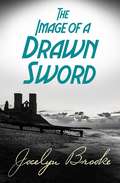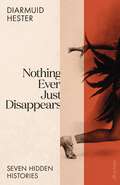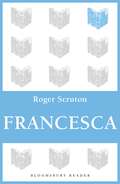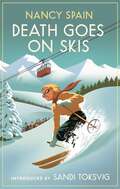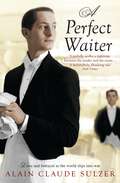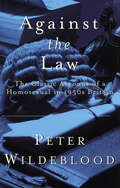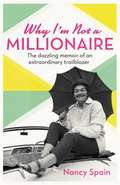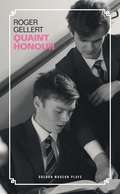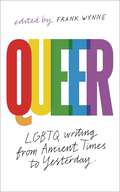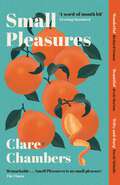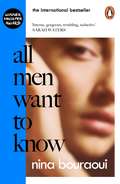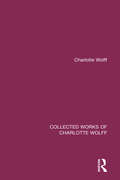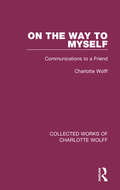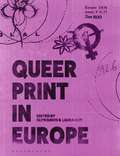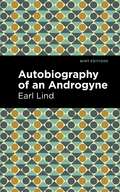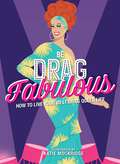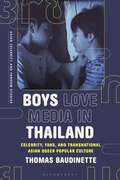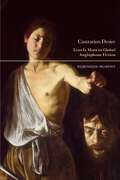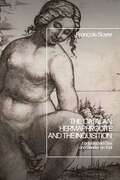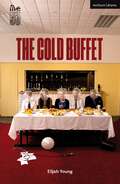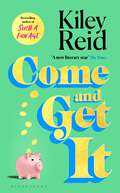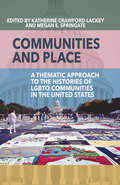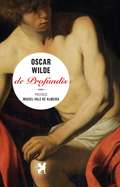- Table View
- List View
The Image of a Drawn Sword
by Jocelyn BrookeThe calm of Reynard Langrish’s quietly predictable life is shattered when, on a night of rain-swept storm, a stranger – a young soldier called Captain Archer - appears at his remote Kentish cottage. He takes Langrish to an ancient hill fort and introduces him to the men under his command, all of whom share a mysterious tattoo – two snakes entwined around a drawn sword – and are engaged in preparations to defend against a nameless menace, referred to only as ‘the Emergency’.As the dreamlike narrative rapidly accelerates into Kafkaesque nightmare, Langrish is drawn into a world where illusion, paranoia, and reality unite with lethal consequences, and disorienting shifts of time and perception culminate in a terrifying moment of pure horror.Originally published in 1950, The Image of a Drawn Sword is steeped in the themes and images that occupy much of Brooke’s writing – the relentlessness of time, suppressed homosexuality, condemned love, self-hatred, and futility; and, above all, an England that was both real and uniquely his own, a mystical, half-known natural world.‘In its way not inferior to Kafka . . . [it has] a haunting, sinister quality’ – Anthony Powell‘Seldom have naturalism and fantasy been more strangely merged’ – Elizabeth Bowen‘He is subtle as the devil’ – John Betjeman‘The skill and intensity of the writing made peculiarly haunting this cry of complaint on behalf of a bewildered Man’ – Pamela Hansford Johnson, Daily Telegraph
Nothing Ever Just Disappears: Seven Hidden Histories
by Diarmuid Hester'With originality and subtlety, Diarmuid Hester examines how the gay imagination deals with place and with displacement, allowing for mystery and a kind of magic' Colm Toibin'Hester is a fizzingly brilliant writer' Robert Macfarlane'Haunted and haunting - totally riveting' Chris KrausAt the turn of the century, in the shade of Cambridge's cloisters, a young E. M. Forster conceals his passion for other men, even as he daydreams about the sun-warmed bodies of ancient Greece. Under the dazzling lights of interwar Paris, Josephine Baker dances her way to fame and fortune and discovers sexual freedom backstage at the Folies Bergère. And on Jersey, in the darkest days of Nazi occupation, the transgressive surrealist Claude Cahun mounts an extraordinary resistance to save the island she loves, scattering hundreds of dissident artworks along its streets and shorelines.Nothing Ever Just Disappears brings to life the stories of seven remarkable figures and illuminates the connections between where they lived, who they loved, and the art they created. It shows that a queer sense of place is central to the history of the twentieth century, and powerfully evokes how much is lost when queer spaces are forgotten. From the lesbian London of the suffragettes to James Baldwin's home in Provence, to Jack Smith's New York, Kevin Killian's San Francisco and the Dungeness cottage of Derek Jarman, this is a thrilling new history and a celebration of freedom, survival and the hidden places of the imagination.
Francesca
by Roger ScrutonSet in the early 1960s, Francesca tells the story of Colin Ferguson, an aspiring writer whose life is blighted by love. The object of his love lies always out of reach, and never more so than when he holds her in his arms. Through Francesca he is offered a vision of modern England that frightens and enthrals him: whether escaping from hers or returning, he always sees something new and unsurprising in this haunted universe. And, as the tragic story unfolds, the reader enters into a world of guilt and hesitation which, for all its strangeness, has an air of uncanny truth. The kaleidoscope of characters – Colin's father, the embittered schoolmaster, Sarah, the lesbian poetess, Harold Plumptre, the prostitute and healer – constantly shifts and reassembles, drawing the ring of fate ever tighter until the novel reaches its surprising but inevitable climax. An atmospheric work, with passages of great descriptive power, Francesca is as a remarkable novel. Its intriguing characters and breathtaking pace grip the reader from the beginning, and its narrative expresses not only the drama of the characters, but also an urgent and compelling vision of the society from which they spring, and of the destiny of any man in the condition of modernity.
Death Goes on Skis: Introduced by Sandi Toksvig - 'Her detective novels are hilarious' (Virago Modern Classics)
by Nancy Spain'Her detective novels are hilarious - less about detecting than delighting, with absurd farce and a wonderful turn of phrase . . . Nancy Spain was bold, she was brave, she was funny, she was feisty. I owe her a great deal' Sandi ToksvigMiriam Birdseye is daring, brilliant - and a long way from The Ivy. Our dashing heroine, a famous revue artist, takes to the slopes with her coterie of admirers. Champagne flows and wherever Miriam goes she leaves a trail of gossip in her wake.Fellow ski-resort guests include the celebrated Russian ex-ballerina, Natasha Nevkorina, whose beauty is matched only by her languor, Natasha's burly husband, nightclub owner Johnny DuVivien, and the wealthy Flahertés, a family who have made their money importing scents: handsome playboy Barney, his wife Regan, their two obnoxious children and the governess, Rosalie. Unbeknownst to Regan, Barney's mistress, a film star, is also there with her husband.When secrets start to unravel, tensions rise, and soon amateur sleuths Miriam and Natasha have not one but two murders to solve. In the hands of Nancy Spain, for whom farce and humour are a lot more fun than a conventional detective novel, the result is a deliciously wild ride.'An either intense or sombre approach to crime is to Miss Spain foreign: in her world an inspired craziness rules . . . Her wit, her zest, her outrageousness, and the colloquial stylishness of her writing are quite her own' Elizabeth Bowen
A Perfect Waiter: A Novel
by Alain Claude SulzerErneste is the perfect waiter-and his private life seems to embody the qualities he brings to his profession. But inwardly this polite and dignified man is in the grip of a violent passion, aroused thirty years before, when he fell in love with a young waiter-in-training named Jakob. Jakob broke his heart when he fled Nazidominated Europe for a new life in America with his lover, Julius Klinger, a celebrated German intellectual. Nursing his wounds, Erneste slinks even deeper into his well-ordered world, hardening into what had only previously been a role. And then, after decades of silence, he receives a letter from a distraught and penniless Jakob asking for help. And Ernest must decide if he will finally take action. Set against the backdrop of a genteel Swiss hotel, and moving skillfully between two time periods, this exquisitely written story of a lifelong passion is rich in tension and emotion, exploring the nature of love and betrayal, memory, and regret.
Against The Law
by Peter Wildeblood'This right which I claim for myself and for all those like me is the right to choose the person whom I love' Peter WildebloodIn March 1954 Peter Wildeblood, a London journalist, was one of five men charged with homosexual acts in the notorious Montagu case. Wildeblood was sentenced to eighteen months in prison, along with Lord Montagu and Major Michael Pitt-Rivers. The other two men were set free after turning Queen's Evidence.Against the Law tells the story of Wildeblood's childhood and schooldays, his war service, his career as a journalist, his arrest, trial and imprisonment, and finally his return to freedom. In its honesty and restraint it is eloquent testimony to the inhumanity of the treatment of gay men in Britain within living memory.
Why I'm Not A Millionaire: The dazzling memoir of an extraordinary trailblazer
by Nancy SpainThe superb classic memoir from a dazzlingly eccentric and endlessly fascinating author - a woman very much ahead of her time.'She was bold, she was brave, she was funny, she was feisty. I owe her a great deal in leading the way' Sandi ToksvigNancy Spain was one of the most celebrated - and notorious - writers and broadcasters of the 40s, 50s and 60s. Hilarious, controversial and brilliant, she lived openly as a lesbian (sharing a household with her two lovers and their various children) and was frequently litigated against for her newspaper columns - Evelyn Waugh successfully sued her for libel... twice. She was also a fantastic crime novelist (and according to the Guardian, one of the 50 best female crime thriller writers of all time) writing with a unique style that marries the acid wit of Dorothy Parker with the intricacy of plotting worthy of Agatha Christie. WHY I AM NOT A MILLIONAIRE, has the same wit, style and fascinating detail - first published in 1956, with an introductory note from Noel Coward. After her death in a plane crash in 1964, Noel Coward commented: 'It is cruel that all that gaiety, intelligence and vitality should be snuffed out, when so many bores and horrors are left living.'
Quaint Honour (Oberon Modern Plays)
by Roger GellertA boys’ boarding school in the 1950s. Homosexuality in the UK is illegal, but behind closed doors and behind the back of the Headmaster, sexual activity between the pupils is rife. When one of the Prefects accepts a challenge to seduce another pupil, he sets in motion a dangerous game of manipulation and corruption, causing devastating consequences that neither could ever have imagined…
Queer: A Collection of LGBTQ Writing from Ancient Times to Yesterday
by Frank WynneLGBTQ writing from ancient times to yesterday, selected by award-winning translator Frank Wynne. Since the dawn of literature, queer people have turned to writing to document their existence: to share great triumphs and deep despairs; to praise the virtues of their lover, extol their loneliness and proclaim their lust; to tell of their peculiarities and mundanities. For almost as long, they have been censored and bowdlerised, persecuted and relegated to the margins. No longer.Alive in these pages, readers will hear Homer's Achilles beat his chest in grief for the loss of his Patroclus and Paul Verlaine exalt the arsehole of his lover. They will see Alison Bechdel tiptoe then leap out of the closet and Juno Dawson come out again, but differently. They will bite and lick and groan in sweet surprise with Roz Kaveney, and fall in and out of love alongside Qiu Miaojin in Paris and Taiwan. They will recognise queer saints and icons – Audre Lorde, Larry Kramer, Virginia Woolf – and meet young queer, trans and non-binary writers – Keith Jarrett, Zhang Yueran and Niviaq Korneliussen, among others.Frank Wynne allows their voices to ring out, unashamed and unabashed, in eighty pieces that straddle the spectrum of queer existence: short stories, poems, essays, extracts and scenes from countries the world over, from ancient times to yesterday.Reviews for Queer: 'A landmark anthology of queer writing' BBC Front Row 'A landmark collection of LGBTQ writing from ancient times to yesterday, featuring powerful voices in many literary forms' Spectator, Books of the Year 'A fearless and life-affirming celebration of what Gilbert Adair [...] called 'the second most natural thing in the world'' Review 31, Books of the Year
Small Pleasures: Longlisted for the Women's Prize for Fiction
by Clare ChambersLONGLISTED FOR THE WOMEN'S PRIZE FOR FICTION 2021'A WORD-OF-MOUTH HIT' Evening Standard 'A very fine book... It's witty and sharp and reads like something by Barbara Pym or Anita Brookner, without ever feeling like a pastiche'David Nicholls'Perfect'India Knight 'Beautiful' Jessie Burton'Wonderful'Richard Osman 'Miraculous'Tracy Chevalier 'A wonderful novel. I loved it'Nina Stibbe 'Effortless to read, but every sentence lingers in the mind' Lissa Evans 'This is one of the most beautiful books I have ever read. I honestly don't want you to be without it'Lucy Mangan'Gorgeous... If you're looking for something escapist and bittersweet, I could not recommend more' Pandora Sykes'Remarkable... Small Pleasures is no small pleasure'The Times'An irresistible novel - wry, perceptive and quietly devastating'Mail on Sunday'Chambers' eye for undemonstrative details achieves a Larkin-esque lucidity' Guardian'An almost flawlessly written tale of genuine, grown-up romantic anguish' The Sunday Times 1957, the suburbs of South East London. Jean Swinney is a journalist on a local paper, trapped in a life of duty and disappointment from which there is no likelihood of escape. When a young woman, Gretchen Tilbury, contacts the paper to claim that her daughter is the result of a virgin birth, it is down to Jean to discover whether she is a miracle or a fraud. As the investigation turns her quiet life inside out, Jean is suddenly given an unexpected chance at friendship, love and - possibly - happiness. But there will, inevitably, be a price to pay.Book of the Year for: The Times, Daily Telegraph, Evening Standard, Daily Express, Metro, Spectator, Red Magazine and Good Housekeeping
All Men Want to Know: 'Intense, gorgeous, troubling, seductive' SARAH WATERS
by Nina Bouraoui'Intense, gorgeous, troubling, seductive - a novel that has to be surrendered to rather than read' Sarah Waters AN INTERNATIONAL BESTSELLERWINNER OF AN ENGLISH PEN TRANSLATES AWARD All Men Want to Know traces Nina Bouraoui's blissful childhood in Algeria, a wild, sun-soaked paradise, with hazy summer afternoons spent swimming, diving, and driving across the desert. Her mother is French, her father Algerian; when racial tensions begin to surface in their neighbourhood, her mother suffers an unspeakable act of violence that forces the family to flee the country. In Paris, eighteen-year-old Nina lives alone. It's the 1980s. Four nights a week she makes her way to The Kat, a legendary gay nightclub, where she watches women from the sidelines, afraid of her own desires, her sudden and intoxicating freedom. In her solitude, she starts to write - and finds herself writing about her mother.All Men Want to Know is a haunting, lyrical international bestseller about mothers and daughters, about shame and sexuality, about existing between two cultures and belonging to neither. A phenomenon in France, this is a defining portrait of womanhood from one of Europe's greatest living writers. 'Magnificent... a captivating autobiographical novel' Elle 'A tour de force' Le Figaro'Haunting, spell-binding, luminous' Lire'An incandescent writer' Les Echos
Collected Works of Charlotte Wolff (Collected Works of Charlotte Wolff)
by Charlotte WolffCharlotte Wolff (1897-1986) was born in Riesenburg, West Prussia (now Prabuty, Poland) into a middle-class Jewish family. She studied philosophy and then medicine at several German universities, completing her doctorate in Berlin in 1926. Working in various institutions over the next few years, she was also interested in psychotherapy and had a small private medical and psychotherapeutic practice. In 1933 she was forced to leave Germany because of the Nazi regime, and settled for a few years in Paris. As a German refugee she was unable to practice medicine, so she began her research into the correlation between hand traits and personality. In 1936 she went to London to continue her research work and lived there until her death. An active lesbian from an early age, her later research turned to sexology and her writing on lesbianism and bisexuality were influential early works in the field. This is a great opportunity to rediscover her early work, including her first autobiography.
On the Way to Myself: Communications to a Friend (Collected Works of Charlotte Wolff)
by Charlotte WolffOriginally published in 1969, Dr Charlotte Wolff was the author of three books of psychology: The Human Hand, A Psychology of Gesture and The Hand in Psychological Diagnosis. This book, though it contains much psychology, is not of the same scientific kind as these. It is an autobiography, but not one of the normal kind. It is the history of a mind, not the chronicle of a life. For this reason it is not arranged chronologically but it is constructed round what the author called the creative shock experiences of her life, some of which belong with their consequences rather than with events adjacent in time. The resulting book is one of imaginative psychology. In the course of a life which began on the borders of Poland and carried her to Germany, France, Russia and England, Dr Wolff had met and known many of the most famous writers, artists and thinkers of the time. In Germany she studied under the founding Existentialists, Husserl and Heidegger; in France she carried out psychological research under Professor Henri Wallon and was also assisted by the Surrealists, André Breton, St. Exupéry, Paul Eluard; in England she was aided in her work by Sir Julian Huxley, Aldous Huxley and his wife, Dr William Stephenson, Dr Earle and others. But Dr Wolff’s earliest creative work was as a poet, and though she turned to psychology, her interest in art brought her into touch at different times with Ravel, Virginia Woolf, Bernard Shaw, Lady Ottoline Morrell, Thomas and Heinrich Mann, Baladine Klossowska and many more. Dr Earle wrote of her that she is ‘an artist of psychology’, and it is thus that she appears in this odd and fascinating book. Today it is an interesting glimpse in to the life of an early feminist psychologist. Her later research focused on sexology, her writing on lesbianism and bisexuality were influential early works in the field.
On the Way to Myself: Communications to a Friend (Collected Works of Charlotte Wolff)
by Charlotte WolffOriginally published in 1969, Dr Charlotte Wolff was the author of three books of psychology: The Human Hand, A Psychology of Gesture and The Hand in Psychological Diagnosis. This book, though it contains much psychology, is not of the same scientific kind as these. It is an autobiography, but not one of the normal kind. It is the history of a mind, not the chronicle of a life. For this reason it is not arranged chronologically but it is constructed round what the author called the creative shock experiences of her life, some of which belong with their consequences rather than with events adjacent in time. The resulting book is one of imaginative psychology. In the course of a life which began on the borders of Poland and carried her to Germany, France, Russia and England, Dr Wolff had met and known many of the most famous writers, artists and thinkers of the time. In Germany she studied under the founding Existentialists, Husserl and Heidegger; in France she carried out psychological research under Professor Henri Wallon and was also assisted by the Surrealists, André Breton, St. Exupéry, Paul Eluard; in England she was aided in her work by Sir Julian Huxley, Aldous Huxley and his wife, Dr William Stephenson, Dr Earle and others. But Dr Wolff’s earliest creative work was as a poet, and though she turned to psychology, her interest in art brought her into touch at different times with Ravel, Virginia Woolf, Bernard Shaw, Lady Ottoline Morrell, Thomas and Heinrich Mann, Baladine Klossowska and many more. Dr Earle wrote of her that she is ‘an artist of psychology’, and it is thus that she appears in this odd and fascinating book. Today it is an interesting glimpse in to the life of an early feminist psychologist. Her later research focused on sexology, her writing on lesbianism and bisexuality were influential early works in the field.
Queer Print in Europe
by Glyn Davis and Laura GuyHow have radical print cultures fostered and preserved queer lived experience from the 1960s to the present? What alternative stories about queer life across Europe can visual material reveal? Queer Print in Europe is the first book devoted to the exploration of queer print cultures in Europe, following the birth of an international gay rights movement in the late 1960s. By unearthing these ephemeral paper documents from archives and personal collections, including materials that have been out of circulation since they were first distributed, this book examines how the production and dissemination of queer print intersected with the emergence of LGBTQ+ activism within specific national contexts. This vital contribution to queer history explores borders and political movements, and the ways in which these materials contributed, through their international circulation, to the creation of a 'post-national' queer community.Illustrated throughout with examples of manifestos, flyers, posters, zines and other forms of print media, it features interviews with those responsible for making, distributing or archiving queer print, alongside a series of new theoretical essays that set particular publications and the individuals and groups that produced them in context. The book isolates specific instances of queer print media and scrutinises their design aesthetics, identifying both the significant contribution that queer print has made to histories of LGBTQ+ struggle and to the history of print design.
Autobiography of an Androgyne
by Earl LindAutobiography of an Androgyne (1918) is an autobiography by Earl Lind. Accompanied by an introduction by Dr. Alfred W. Herzog, Lind’s autobiography―intended for a clinical audience―has been recognized as a pioneering work in the history of transgender literature. Throughout his life, Lind was forced to justify and defend his existence from puritanical authorities who refused to even recognize the reality of his identity as an androgyne. In the first of his trilogy of autobiographical works, he not only demands recognition, but exposes the denial of his existence as nothing but hatred and fear. “Androgynes have of course existed in all ages of history and among all races. In Greek and Latin authors there are many references to them, but these references are not always understood except by the few scholars who are themselves androgynes or at least passive sexual inverts. […] [T]hese men-women, because misunderstood, have been held in great abomination both in the middle ages and in modern times, but the prejudice against them was not so extreme in antiquity, and a cultured citizen having this nature did not then lose caste on this account.” Situating his own identity within this history of oppression, Lind makes the case for recognizing the presence of androgynes in all human societies. Ever since he was a child, Lind identified as feminine and was keenly aware of his homosexual desires, gaining a reputation among the local boys and soon turning to girls for friendship and understanding. In a world that saw androgynes as both corrupt and willfully different, Lind sought to increase understanding and to explain through scientific, historical, and personal evidence why his identity was congenital, and therefore natural. With a beautifully designed cover and professionally typeset manuscript, this edition of Earl Lind’s Autobiography of an Androgyne is a classic work of transgender literature reimagined for modern readers.
Be Drag Fabulous: How to Live Your Best Drag Queen Life
by Katie MockridgeBringing together life advice and gorgeous illustrations inspired by some of the best drag queens from all over the world, this book will have you sashaying your way to success.Whenever you need life advice, just think: WWADQD – What Would A Drag Queen Do? Containing 75 essential lessons, Be Drag Fabulous will show you how to become the most spectacular version of yourself.Containing gorgeous illustrations by Katie Mockridge, this little book of drag wit and wisdom has you covered on all aspects of life, from fashion and self-care, beauty, friendships and work and brings together the best drag queens from around the world.Make your world you very own catwalk and learn how to channel your charisma, uniqueness, nerve and talent. Condragulations, this is the first step in becoming drag fabulous. The perfect gift for fans of RuPaul’s Drag Race.
Boys Love Media in Thailand: Celebrity, Fans, and Transnational Asian Queer Popular Culture (Asian Celebrity and Fandom Studies)
by Thomas BaudinetteOver the past several years, the Thai popular culture landscape has radically transformed due to the emergence of “Boys Love” (BL) soap operas which celebrate the love between handsome young men. Boys Love Media in Thailand: Celebrity, Fans, and Transnational Asian Queer Popular Culture is the first book length study of this increasingly significant transnational pop culture phenomenon. Drawing upon six years of ethnographic research, the book reveals BL's impacts on depictions of same-sex desire in Thai media culture and the resultant mainstreaming of queer romance through new forms of celebrity and participatory fandom. The author explores how the rise of BL has transformed contemporary Thai consumer culture, leading to heterosexual female fans of male celebrities who perform homoeroticism becoming the main audience to whom Thai pop culture is geared. Through the case study of BL, this book thus also investigates how Thai media is responding to broader regional trends across Asia where the economic potentials of female and queer fans are becoming increasingly important. Baudinette ultimately argues that the center of queer cultural production in Asia has shifted from Japan to Thailand, investigating both the growing international fandom of Thailand's BL series as well as the influence of international investment into the development of these media. The book particularly focuses on specific case studies of the fandom for Thai BL celebrity couples in Thailand, China, the Philippines, and Japan to explore how BL series have transformed each of these national contexts' queer consumer cultures.
Castration Desire: Less Is More in Global Anglophone Fiction
by Prof. or Dr. Robinson MurphyTheorizes an alternative form of masculinity in global literature that is less egocentric and more sustainable, both in terms of gendered and environmental power dynamics.Contemporary novelists and filmmakers like Kazuo Ishiguro (Japanese-British), Emma Donoghue (Irish-Canadian), Michael Ondaatje (Sri Lankan-Canadian), Bong Joon-ho (South Korean) and J.M. Coetzee (South African-Australian) are emblematic of a transnational phenomenon that Robinson Murphy calls “castration desire.” That is, these artists present privileged characters who nonetheless pursue their own diminishment. In promulgating through their characters a less egocentric mode of thinking and acting, these artists offer a blueprint for engendering a more other-oriented global relationality. Murphy proposes that, in addition to being an ethical prerogative, castration desire's “less is more” model of relationality would make life livable where veritable suicide is our species' otherwise potential fate. “Castration desire” thus offers an antidote to rapacious extractivism, with the ambition of instilling a sustainable model for thinking and acting on an imminently eco-apocalyptic earth.In providing a fresh optic through which to read a diversity of text-types, Castration Desire helps define where literary criticism is now and where it is headed. Castration Desire additionally extends and develops a zeitgeist currently unfolding in critical theory. It brings Leo Bersani's concept “psychic utopia” together with Judith Butler's “radical egalitarianism,” but transports their shared critique of phallic individualization into the environmental humanities. In doing so, this book builds a new framework for how gender studies intersects with environmental studies.
The ‘Catalan Hermaphrodite’ and the Inquisition: Early Modern Sex and Gender on Trial
by Professor François SoyerThis book examines the life of Maria Duran, who was born with female genitalia, but was accused of being a man and subsequently put on trial for sorcery by the Portuguese Inquisition during the 18th century. François Soyer uses Maria's story to open a window onto the world of the experience of 'transing' gender, as well as the gendered attitudes and responses to the transgression of gendered norms that were adopted by churchmen, medical practitioners and ordinary lay men and women. Drawing on the surviving (and staggeringly 736-page long) sorcery trial dossier, Soyer analyses the secretive life of an individual who actively and deliberately 'transed' gender. The dossier analysis enables insights into aspects of life so rarely recorded in early modern documents: the transgression of gender norms, transgressive sexuality and sexual violence in female religious institutions, in addition to the fears and debates about the power that the Devil could wield over the human body. The 'Catalan Hermaphrodite' and the Inquisition also reveals how the Inquisition gathered a number of doctors, surgeons and midwives to conduct careful examinations of Maria's body in general and genitals in particular. Their reports and the discussions of the inquisitors are discussed by Soyer and offer further fascinating evidence of attitudes towards sex and gender in early modern Europe.
The Cold Buffet (Modern Plays)
by Elijah YoungWe're family. We don't have to like each other.Things are never easy for Ellis when the family gets together. A dad who doesn't get him, a cousin who can do no wrong, a (not-so-passive) aggressive grandma, his dad's latest intolerable girlfriend and a grandpa in an urn are just some of the things Ellis has to contend with. When it begins to become tradition at these occasions for true feelings to be unearthed, is it finally time for Ellis to cut ties?Set in the back room of a social club, away from the main action, the play journeys us through a wake, a wedding and a christening, and lifts the lid on the tensions behind every family ritual. Many things change over the years but something that will always remain is the same cold buffet. Elijah Young's epic comedy The Cold Buffet follows the McCarthy family over five years of life, death and love. It's a delicious North East family saga laced with dry humour and a good dose of interpersonal tension.This edition was published to coincide with the world premiere at Newcastle's Live Theatre, in October 2023.
Come and Get It: One of 2024's hottest reads – chosen for Fearne Cotton's Happy Place Book Club
by Kiley ReidTHE UNMISSABLE NEW NOVEL FROM THE AUTHOR OF BESTSELLING PHENOMENON SUCH A FUN AGE* THE INSTANT NEW YORK TIMES BESTSELLER ** FEARNE COTTON'S HAPPY PLACE BOOK CLUB PICK FOR FEBRUARY *'I couldn't put it down, and I didn't want to either' EMILY HENRY'The drama is just too juicy – how could anyone resist a binge?' GUARDIAN'Razor-sharp … Packs a huge emotional punch' DAILY MAILEverything comes at a price. But not everything can be paid for…Millie wants to graduate, get a job and buy a house. She's slowly saving up from her job on campus, but when a visiting professor offers her an unusual opportunity to make some extra money, she jumps at the chance. Agatha is a writer, recovering from a break-up while researching attitudes towards weddings and money for her new book. She strikes gold when interviewing the girls in Millie's dorm, but her plans take a turn when she realises that the best material is unfolding behind closed doors. As the two women form an unlikely relationship, they soon become embroiled in a world of roommate theatrics, vengeful pranks and illicit intrigue – and are forced to question just how much of themselves they are willing to trade to get what they want.Sharp, intimate and provocative, Come and Get It takes a lens to our money-obsessed society in a tension-filled story about desire, consumption and bad behaviour.'Smart, funny and perceptive' i'A perfect read' STYLIST 'Wonderfully immersive, propulsive and beautifully paced' PAUL HARDING 'Quiet and intense … A joy to read' JESSICA GEORGE'Witty and nuanced' RED'[An] incisive novel everyone will be talking about' TOWN AND COUNTRY
Communities and Place: A Thematic Approach to the Histories of LGBTQ Communities in the United States
by Katherine Crawford-Lackey Megan E. SpringateLesbian, gay, bisexual, transgender, and queer (LGBTQ) people have established gathering spaces to find acceptance, form social networks, and unify to resist oppression. Framing the emergence of queer enclaves in reference to place, this volume explores the physical and symbolic spaces of LGBTQ Americans. Authors provide an overview of the concept of “place” and its role in informing identity formation and community building. The book also includes interactive project prompts, providing opportunities to practically apply topics and theories discussed in the chapters.
Communities and Place: A Thematic Approach to the Histories of LGBTQ Communities in the United States
by Katherine Crawford-Lackey Megan E. SpringateLesbian, gay, bisexual, transgender, and queer (LGBTQ) people have established gathering spaces to find acceptance, form social networks, and unify to resist oppression. Framing the emergence of queer enclaves in reference to place, this volume explores the physical and symbolic spaces of LGBTQ Americans. Authors provide an overview of the concept of “place” and its role in informing identity formation and community building. The book also includes interactive project prompts, providing opportunities to practically apply topics and theories discussed in the chapters.
De Profundis
by Rita Correia Isabel Robalinho Miguel Vale de Almeida Oscar WildeNo Verão de 1891, Wilde é apresentado ao jovem Lord Alfred Douglas, familiarmente conhecido como Bosie, estudante de Oxford com aspirações literárias, filho do Marquês de Queensberry. Inicia-se então a tempestuosa amizade que culminará no julgamento e condenação de Oscar Wilde a dois anos de trabalhos forçados, em 1895. A longa carta dirigida a Lord Alfred Douglas foi escrita durante os últimos meses que Wilde passou na prisão de Reading. Esta carta não foi enviada a Bosie da prisão, mas confiada a Robert Ross, amigo de Wilde, várias vezes mencionado ao longo do texto, que dela mandou fazer duas cópias, de acordo com a vontade de Oscar Wilde. Uma das cópias teria como destinatário Lord Alfred Douglas, que sempre negou tê-la recebido, a segunda foi deixada em testamento ao filho de Wilde, Vyvyan Holland.
